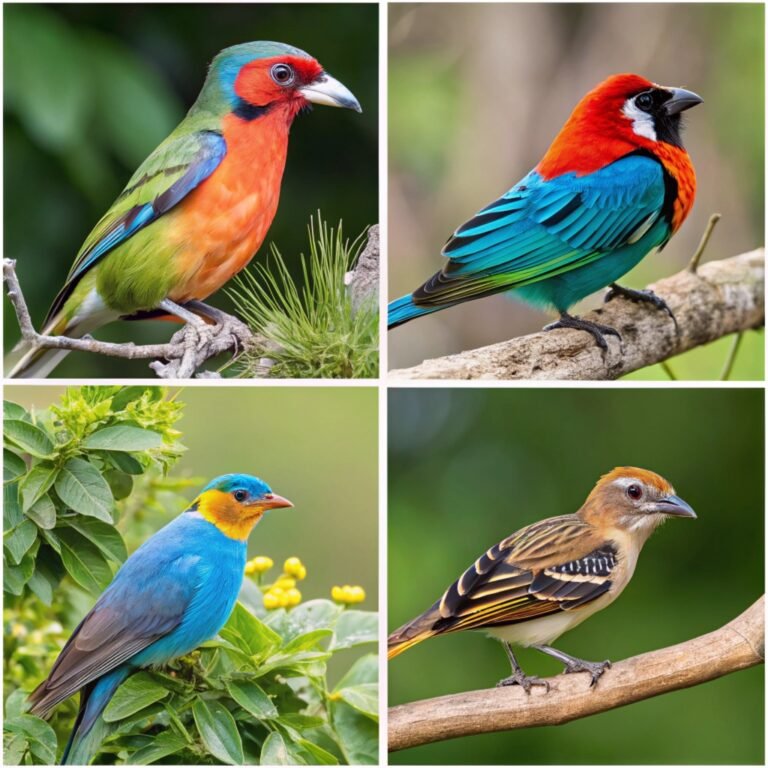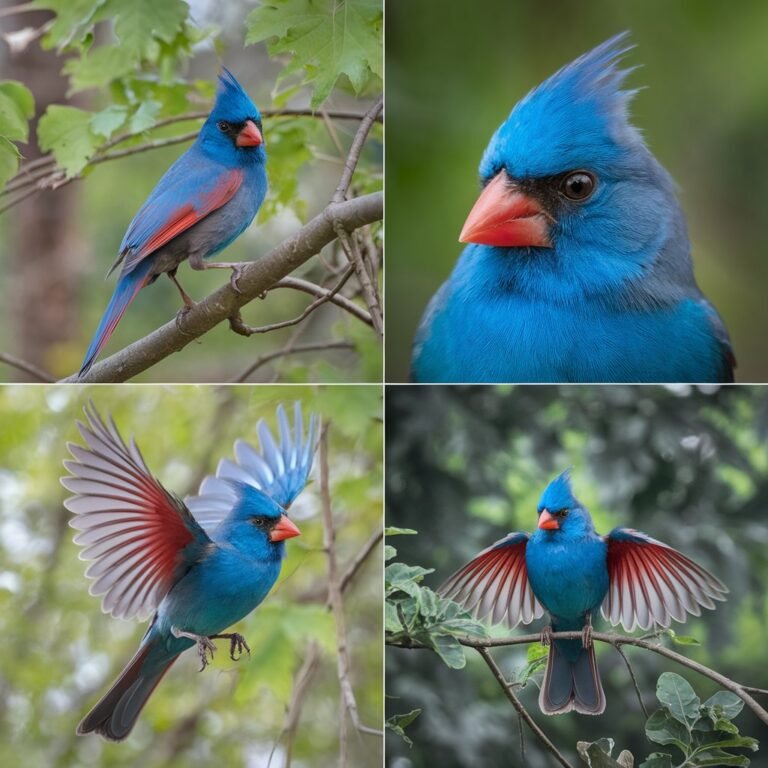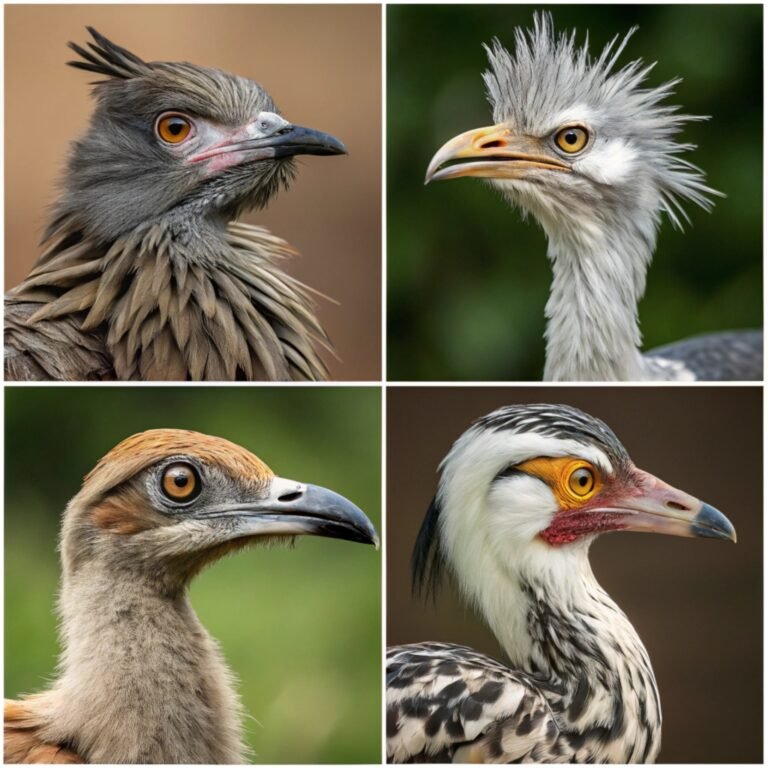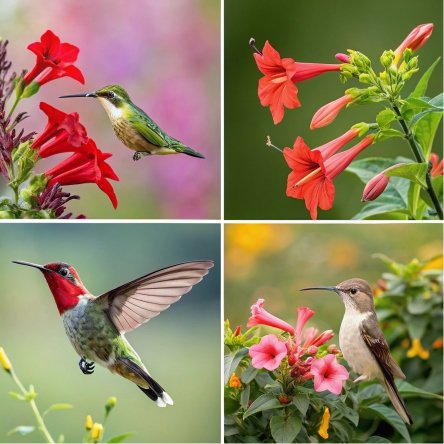Unique Collective Nouns for Various Bird Species: A Comprehensive Guide
The English language is a treasure trove of captivating expressions, and nowhere is this more evident than in the realm of collective nouns for birds.
These unique terms not only add color to our vocabulary but also offer intriguing insights into how we perceive and relate to our feathered friends.
From the ominous “murder of crows” to the joyful “exaltation of larks,” each collective noun paints a vivid picture of the birds’ characteristics, behaviors, or the impressions they leave on us.

Key Takeaways:
- Linguistic Diversity: Collective nouns for birds showcase the rich variety and creativity of the English language, offering unique insights into how we perceive different bird species.
- Historical Roots: Many of these terms have deep historical origins, with some dating back to the 15th century, reflecting long-standing cultural fascinations with birds.
- Behavioral Reflections: Collective nouns often mirror the behavior or characteristics of the birds they describe, such as “a murmuration of starlings” capturing their mesmerizing flight patterns.
- Cultural Significance: These terms reveal cultural perceptions and folklore associated with various bird species, like the wisdom attributed to owls in “a parliament of owls.
- Poetic Nature: Many collective nouns are inherently poetic, adding a layer of imagery and emotion to our descriptions of bird gatherings.
- Evolving Language: While many terms are traditional, new collective nouns continue to be created, reflecting changing perceptions and modern contexts.
- Beyond Description: These terms serve not just as descriptors but as gateways to deeper appreciation and understanding of avian life.
- Interdisciplinary Appeal: The study of these collective nouns bridges interests in ornithology, linguistics, and cultural studies.
- Educational Value: Learning these terms can enhance vocabulary and provide a unique way to engage with both language and nature.
- Conversational Charm: Knowledge of these collective nouns can add color and interest to conversations about birds and nature.
- Reflection of Biodiversity: The variety of collective nouns mirrors the biodiversity of the bird world, highlighting the unique qualities of different species.
- Imaginative Expressions: These terms demonstrate the human capacity for imaginative expression, turning simple group descriptions into evocative phrases.
- Cross-Cultural Phenomenon: While particularly rich in English, the concept of specific collective nouns for birds exists in various cultures, reflecting a universal fascination with avian life.
- Insight into Human Perception: The nature of these terms offers insights into how humans perceive and categorize the natural world around them.
- Encouragement of Observation: Knowing these terms can encourage closer observation of bird behavior and characteristics, fostering a deeper connection with nature.
The Enchanting Language of Bird Gatherings
The English language is rich with colorful and imaginative ways to describe groups of birds.
These collective nouns often reflect the birds’ behavior, appearance, or the impression they leave on observers.
Some are widely known, while others are more obscure, but all add a touch of poetry to our descriptions of avian assemblies.
These terms originated from various sources, including hunting traditions, folklore, and literary works.
Many date back to the 15th century or earlier, showcasing the long-standing fascination humans have had with birds and their social behaviors.
Understanding these collective nouns not only enhances our vocabulary but also deepens our appreciation for the diversity and uniqueness of different bird species.
Let’s embark on a journey through this linguistic aviary, exploring the charming and sometimes surprising ways we describe bird gatherings.
A Murder of Crows: The Sinister Gathering

Perhaps one of the most well-known and intriguing collective nouns is “a murder of crows.”
This term reflects the long-standing association of crows with death and mystery in many cultures.
Crows are highly intelligent birds known for their problem-solving abilities and complex social structures.
The term “murder” likely stems from the birds’ black plumage and their tendency to gather around carrion.
However, it’s important to note that crows are not actually murderous; they are opportunistic omnivores that play a crucial role in ecosystems.
Interestingly, a group of crows can also be called a “horde” or a “mob,” emphasizing their gregarious nature.
Some sources even suggest “parliament” as an alternative, perhaps alluding to their perceived wisdom and communal decision-making.
An Exaltation of Larks: The Joyful Chorus
In stark contrast to the somber “murder of crows,” we have the uplifting “exaltation of larks.”
This term beautifully captures the soaring, melodious songs of these small birds as they ascend into the sky. Larks are known for their elaborate courtship displays and their habit of singing while in flight.
The word “exaltation” evokes a sense of joy and elevation, perfectly mirroring the lark’s behavior and the effect their songs have on listeners. It’s a prime example of how collective nouns can be both descriptive and poetic.
This term has become so evocative that it inspired the title of James Lipton’s book “An Exaltation of Larks,” which explores the rich world of collective nouns for various animals and objects.
A Parliament of Owls: The Wise Assembly
Owls have long been associated with wisdom and knowledge in many cultures, and their collective noun reflects this perception.
“A parliament of owls” conjures images of these nocturnal birds gathered in solemn discussion, much like human legislators.
This term likely originated from Chaucer’s “The Parliament of Fowls,” a 14th-century poem that depicts birds gathering to choose their mates.
The association of owls with wisdom can be traced back to ancient Greek mythology, where the owl was a symbol of Athena, the goddess of wisdom.
Interestingly, owls are generally solitary birds, so a large gathering of owls is a rare sight in nature. This makes the term “parliament” more of a fanciful notion than a reflection of typical owl behavior.
A Charm of Finches: The Delightful Flock
The term “a charm of finches” perfectly encapsulates the delightful nature of these small, colorful birds.
Finches are known for their cheerful songs and vibrant plumage, making them a favorite among birdwatchers and pet owners alike.
The word “charm” in this context likely comes from the Old English “cirm,” meaning noise or cry.
It aptly describes the pleasant chattering of a group of finches. This collective noun beautifully combines the auditory and visual appeal of these birds.
Interestingly, goldfinches, a type of finch, have their own specific collective noun: “a troubling of goldfinches.”
This term might refer to their habit of descending on gardens in large numbers, potentially troubling gardeners with their voracious appetites for seeds.
A Gaggle of Geese: The Grounded Gathering
“A gaggle of geese” is one of the more commonly known collective nouns, typically referring to a group of geese on the ground.
The term is thought to be imitative of the sound geese make, reflecting their noisy, chattering nature when gathered together.
Interestingly, when geese are in flight, they’re referred to as “a skein of geese.” This term likely comes from the V-formation they adopt during migration, resembling a skein of yarn.
The distinction between “gaggle” and “skein” showcases how collective nouns can change based on the birds’ behavior or location, adding another layer of descriptive precision to our language.
A Murmuration of Starlings: The Aerial Ballet
One of the most spectacular sights in the bird world is a “murmuration of starlings.” This term describes the mesmerizing aerial displays of thousands of starlings flying in coordinated patterns, creating swirling, shape-shifting clouds in the sky.
The word “murmuration” comes from the murmuring sound created by the wingbeats and calls of a large flock of starlings. This collective noun beautifully captures both the visual and auditory aspects of this natural phenomenon.
Scientists believe that starlings perform these intricate aerial ballets as a defense mechanism against predators and to exchange information about feeding areas.
The synchronization is so precise that the entire flock can change direction in a fraction of a second.
A Wake of Buzzards: The Scavenging Squadron
“A wake of buzzards” is a collective noun that aptly describes the behavior of these birds of prey. Buzzards, also known as vultures in some regions, are often seen circling over areas where they sense the presence of carrion.
The term “wake” in this context likely refers to the aftermath or trail left behind by something, much like the wake of a ship. I
t paints a vivid picture of buzzards following in the wake of death, fulfilling their important role as nature’s clean-up crew.
Despite their somewhat macabre reputation, buzzards play a crucial role in ecosystems by disposing of carrion and preventing the spread of disease. Their gathering serves a vital purpose in maintaining environmental balance.
A Pandemonium of Parrots: The Colorful Chaos
The term “a pandemonium of parrots” perfectly captures the vibrant and often noisy nature of these intelligent birds.
Parrots are known for their colorful plumage, ability to mimic sounds, and their sometimes raucous behavior when gathered in groups.
“Pandemonium” literally means a wild uproar or unrestrained disorder. This term vividly describes the cacophony of squawks and screeches that can erupt when multiple parrots congregate, as well as the visual spectacle of their bright feathers.
Interestingly, parrots can also be referred to as “a company” or “a prattle,” further emphasizing their social and vocal nature. These terms reflect the diverse ways we perceive and describe these charismatic birds.
A Siege of Herons: The Patient Predators
“A siege of herons” is a collective noun that paints a vivid picture of these long-legged wading birds.
Herons are known for their patient hunting style, often standing motionless in shallow water for long periods before striking at their prey with lightning speed.
The term “siege” likely comes from the birds’ statuesque posture as they wait for fish, which might resemble soldiers laying siege to a fortress. It’s a testament to the heron’s focused and determined nature when hunting.
Interestingly, herons can also be referred to as “a sedge” or “a scattering,” perhaps alluding to their habitat preferences or their dispersed feeding patterns in wetlands.
A Convocation of Eagles: The Majestic Assembly
The term “a convocation of eagles” evokes a sense of grandeur and importance befitting these majestic birds of prey.
Eagles have long been symbols of power and freedom in many cultures, and this collective noun reflects their esteemed status.
“Convocation” typically refers to a formal assembly of people, often in academic or ecclesiastical settings. Applied to eagles, it suggests a gathering of great significance, perhaps mirroring the awe these birds inspire in humans.
Alternatively, eagles can be referred to as “a congress,” further emphasizing the perceived importance and authority of these raptors.
These terms highlight our tendency to anthropomorphize animals, attributing human-like qualities to their gatherings.
A Pitying of Doves: The Gentle Gathering
The collective noun “a pitying of doves” beautifully captures the gentle and peaceful nature often associated with these birds.
Doves have long been symbols of peace and love in many cultures, and their soft cooing calls can evoke a sense of calm.
The term “pitying” might stem from the mournful quality some people perceive in the doves’ calls. It’s a poetic interpretation that adds an emotional dimension to our description of these birds.
Interestingly, doves can also be called “a dule” or “a flight,” with “dule” being derived from the Latin “dolor,” meaning sorrow or grief. These alternative terms further emphasize the emotional associations we have with doves.
A Wisdom of Wombats: The Unexpected Gathering
While not a bird, the collective noun “a wisdom of wombats” is worth mentioning for its unexpected charm. Wombats are marsupials native to Australia, known for their burrowing habits and cube-shaped droppings.
The term “wisdom” seems to be a playful attribution, perhaps referring to the wombats’ perceived stoic or thoughtful appearance. It’s a reminder that collective nouns can sometimes be more whimsical than strictly descriptive.
This example showcases how collective nouns extend beyond birds to other animals, adding color and creativity to our descriptions of the natural world. It encourages us to look at familiar creatures in new, imaginative ways.
FAQs
What is the origin of these collective nouns for birds?
Many collective nouns for birds originated in the 15th century, particularly from hunting traditions. The “Book of Saint Albans,” published in 1486, included a list of “companies of beasts and fowls,” which became a foundation for many of the terms we use today.
Are these collective nouns scientifically recognized?
While these terms are widely used in literature and casual conversation, they are not scientific classifications. Ornithologists typically use more neutral terms like “flock” or “group” in scientific contexts.
Do all languages have similar collective nouns for birds?
The extensive use of specific collective nouns for different bird species is largely an English language phenomenon. While other languages may have some collective terms for animals, the variety and creativity seen in English is quite unique.
Can new collective nouns be created?
Absolutely! Language is constantly evolving, and new collective nouns can be coined. Some modern examples include “an iPad of owls” or “a Twitter of finches,” reflecting our digital age.
Are there collective nouns for birdwatchers?
Yes, birdwatchers have their own collective nouns too! A group of birdwatchers can be called “a gathering” or, more humorously, “a twitching” of birdwatchers.

Hello, I’m Emily Price, the founder of Birds Affection. As a passionate bird enthusiast and spiritual seeker, I’ve always been fascinated by the symbolic meanings and mystical connections between birds and our lives. On this website, I share my knowledge and insights on the spiritual significance of various bird species, exploring their roles as messengers, guides, and teachers. Through my writing, I aim to inspire and educate others on the profound wisdom and beauty that birds bring to our world. Join me on this journey as we delve into the enchanting realm of bird symbolism and discover the hidden meanings behind these magnificent creatures.







